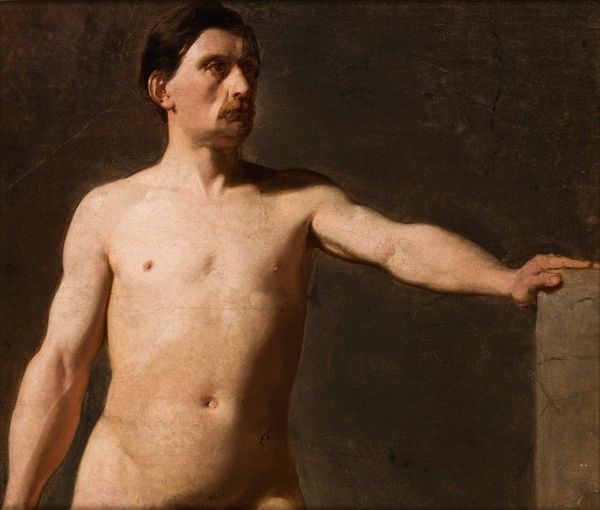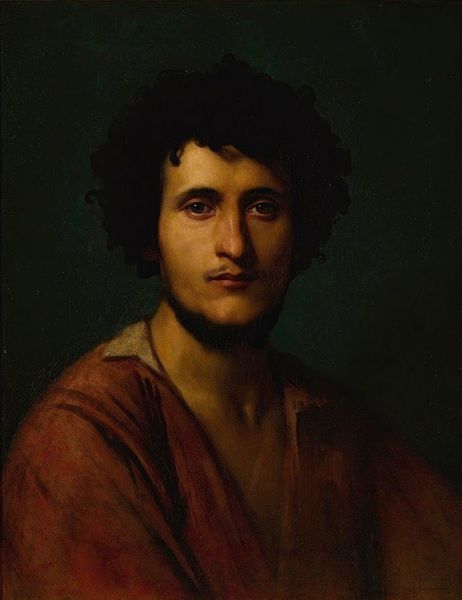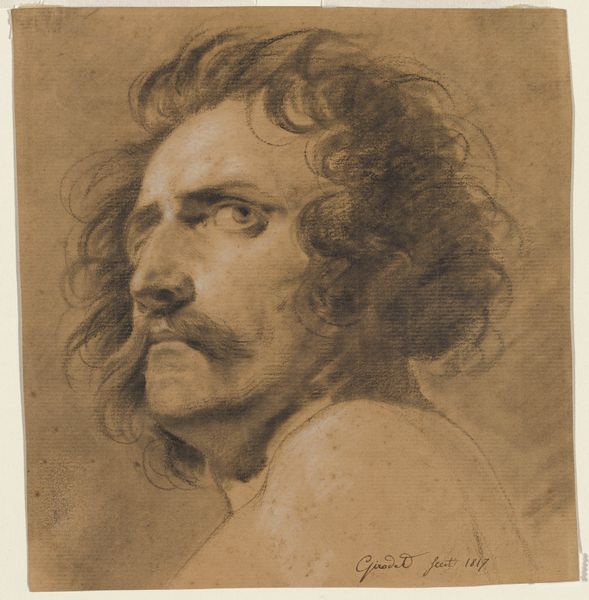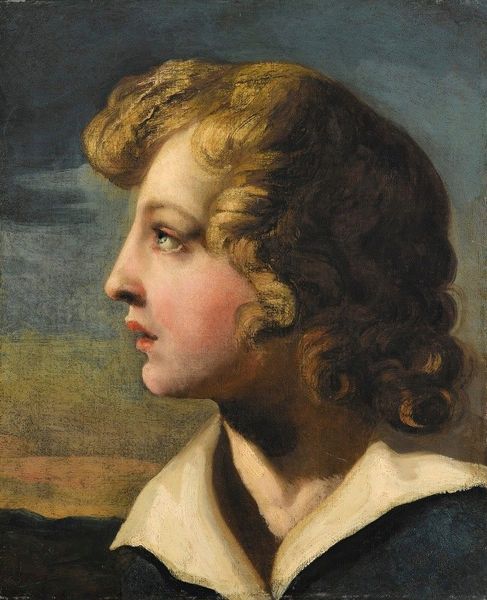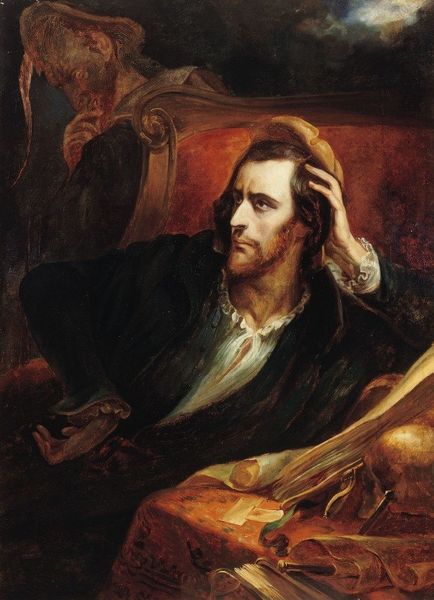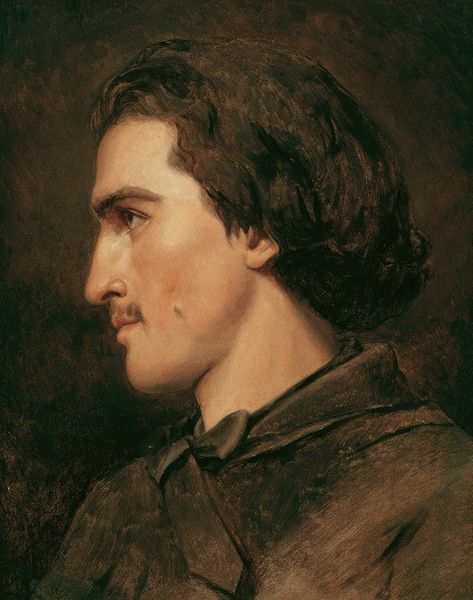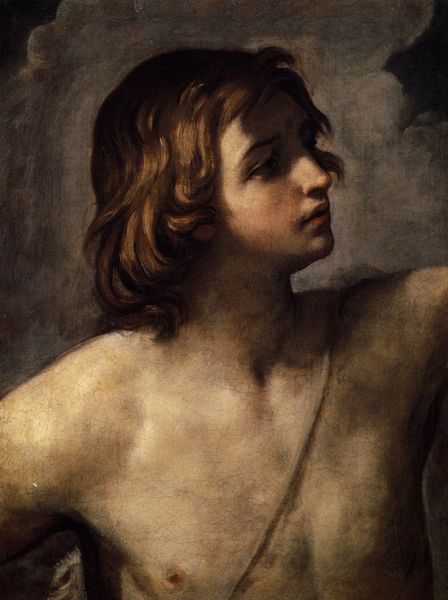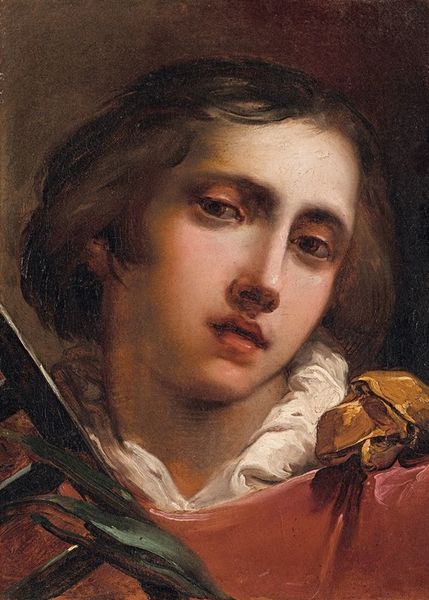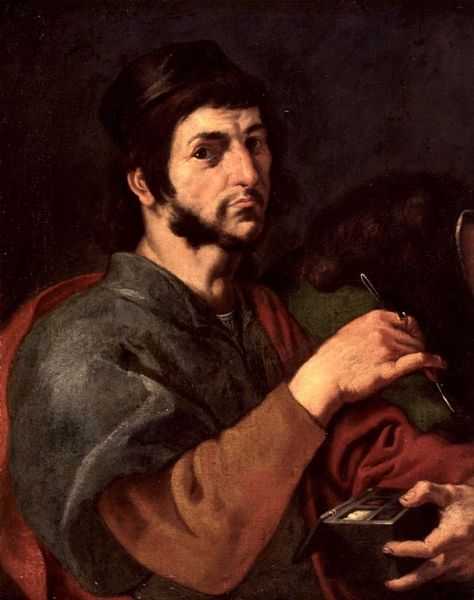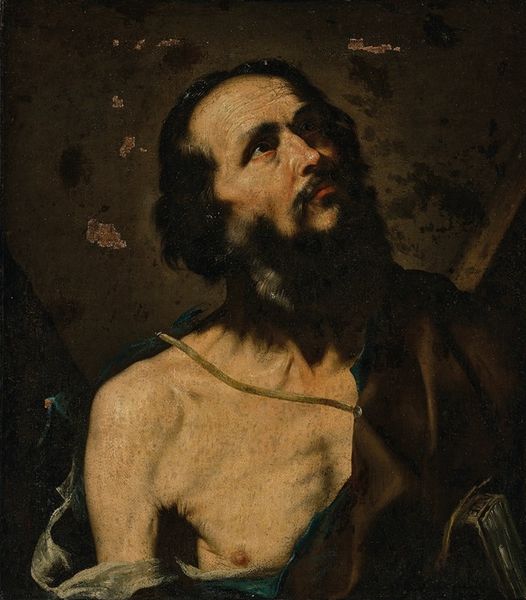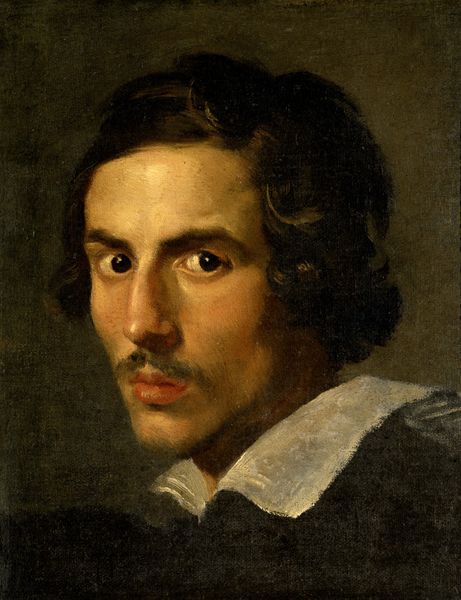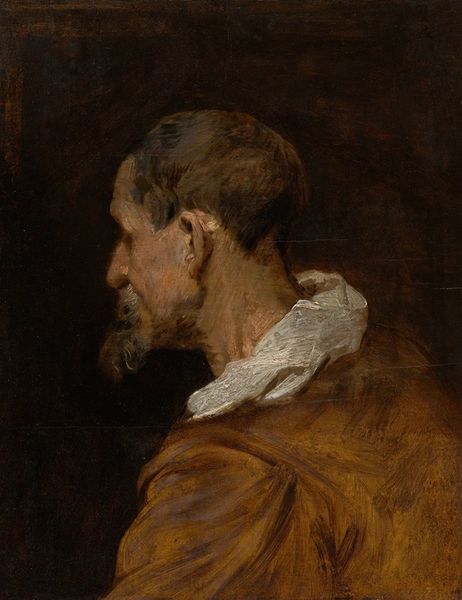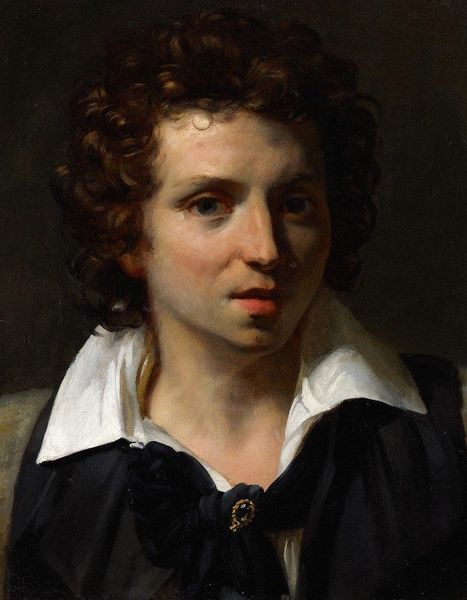
Copyright: Public Domain: Artvee
Editor: This is Jan Matejko's "Academic study – young man" from 1859, rendered in oil paint. There's a somberness to this portrait; the subject’s downcast gaze evokes introspection or perhaps even melancholy. How do you interpret this work? Curator: I see a powerful representation of marginalized masculinity, particularly within the historical context of 19th-century Poland. Consider Matejko's later work which dealt with grand narratives of Polish nationalism; in contrast, this study offers a more intimate, almost vulnerable portrayal. How does the sitter's partially draped form resonate with classical representations of the male nude and how might this inform ideas around virility and power? Editor: That's interesting. I hadn't thought about the classical references in relation to a specific cultural and gendered reading. The light seems almost to push the man into the shadows, obscuring, but also revealing. Curator: Exactly! The dramatic chiaroscuro enhances that tension. Could the darkness be interpreted as a symbolic representation of social and political constraints placed upon young men of the era, limiting their self-expression and autonomy? Think about how notions of acceptable masculine identity were being shaped. What aspects are highlighted, and what remains hidden? Editor: So, the technical aspects of the painting amplify broader social themes about masculine identity and visibility? Curator: Precisely. It invites us to question who is allowed to be seen and what parts of their identity must remain concealed, resonating even today. Editor: This really broadened my perspective. I appreciate how you connected the formal qualities to those deeper socio-political readings. Curator: And I think your observations about the sitter’s mood opened the door to those broader conversations. Thanks for helping me reconsider the subtleties embedded within it.
Comments
No comments
Be the first to comment and join the conversation on the ultimate creative platform.
